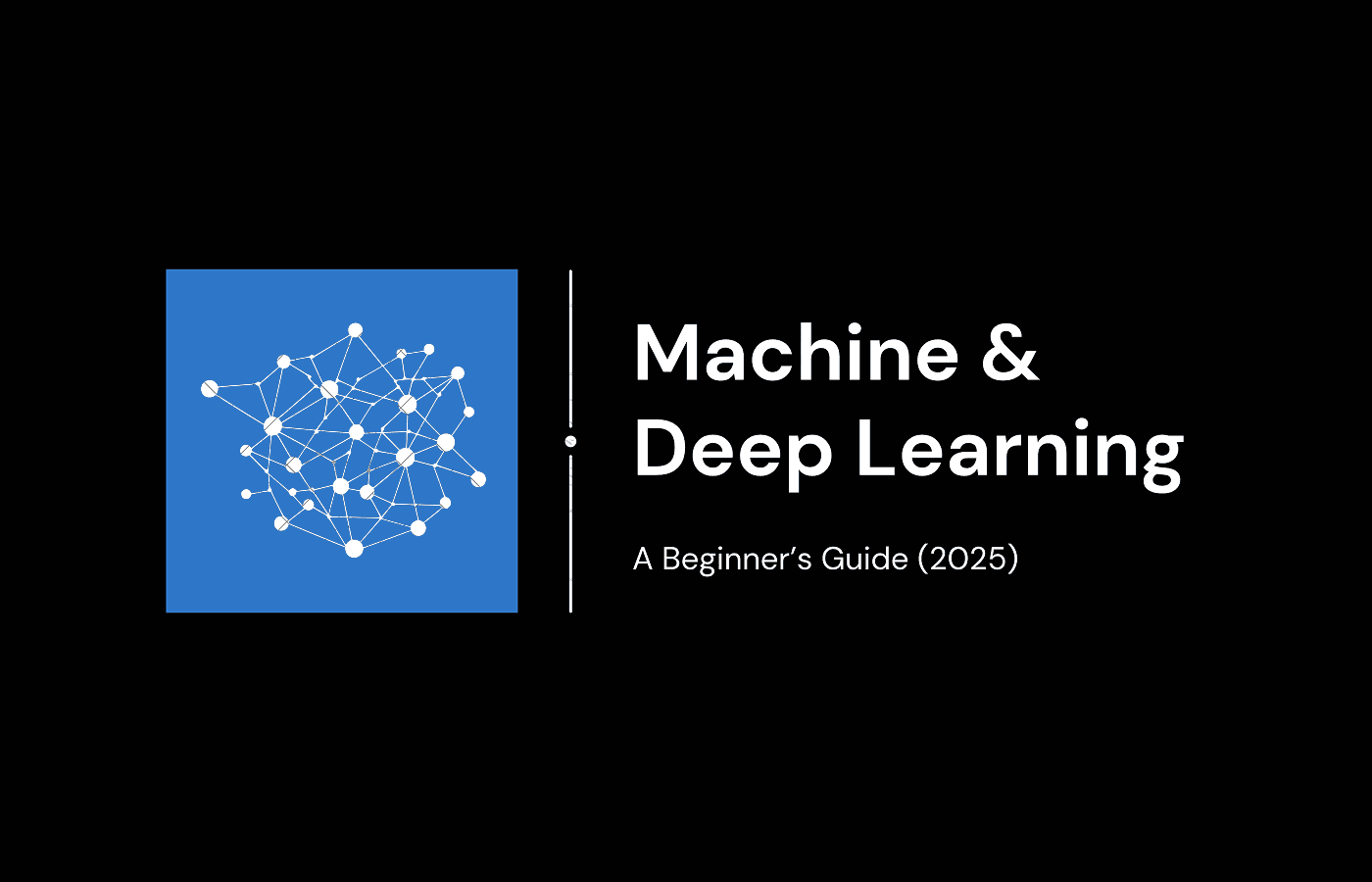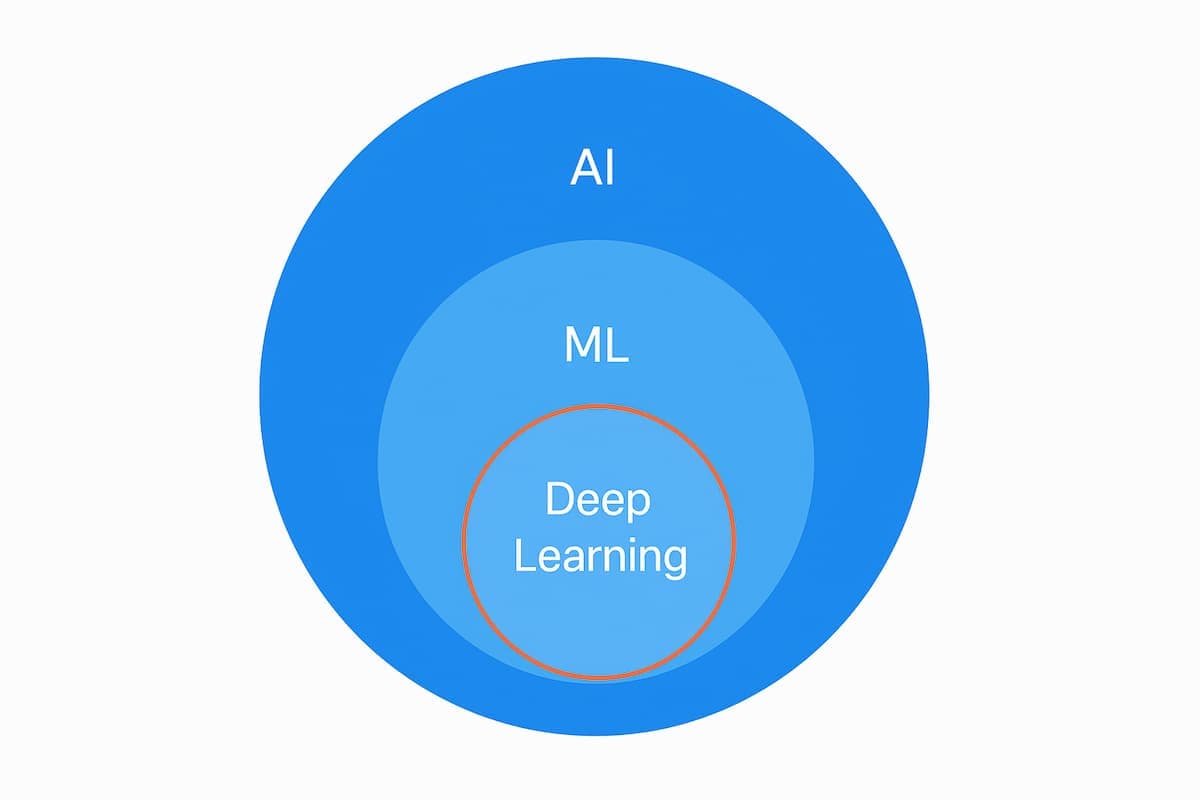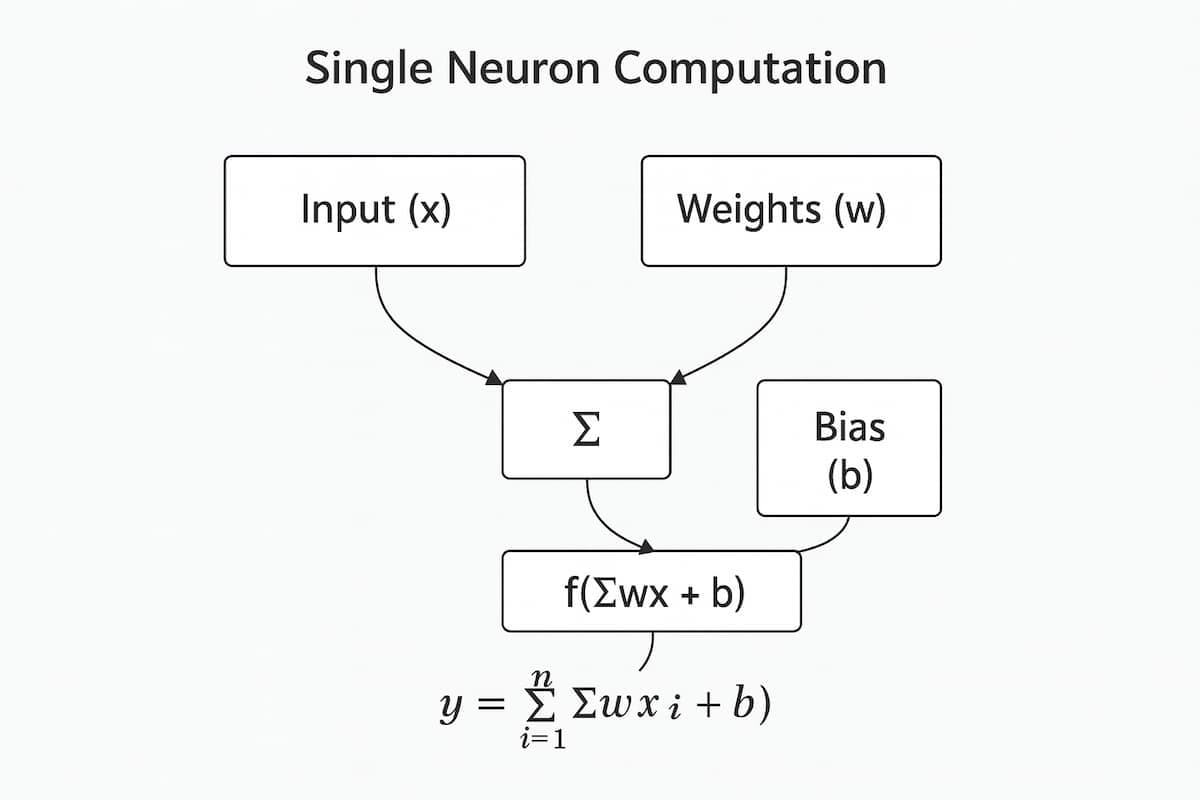Machine & Deep Learning Made Easy: A Beginner’s Guide (2025)

Introduction
Have you ever wondered how Netflix recommends your next favorite show or how your phone instantly identifies your face? Behind these intelligent tasks lie Machine Learning (ML) and Deep Learning (DL), two key components of Artificial Intelligence (AI). This detailed guide explores these advanced technologies intuitively and comprehensively.
"Machine intelligence is the last invention that humanity will ever need to make." – Nick Bostrom
AI, ML, and DL Hierarchy
Artificial Intelligence is the overarching concept: the simulation of human intelligence by machines. Within this broad field:
- Machine Learning teaches machines to learn from data.
- Deep Learning, a specialized form of ML, mimics the human brain to solve highly complex tasks.
Think of it like this:
AI is the full toolbox, ML is one powerful tool inside it, and DL is a specialized upgrade of that tool.

Deep Dive into Machine Learning
What is Machine Learning?
Machine Learning (ML) is the science of teaching machines how to learn from past data and improve with experience. Instead of manually coding behavior, we feed the machine examples, and it figures out the logic on its own.
Imagine showing a child hundreds of images of cats and dogs, and eventually they can recognize them in real life — that’s ML in action.
"Machine Learning gives computers the ability to learn without being explicitly programmed." – Arthur Samuel
How It Works
- Feeding data into an algorithm (e.g., past customer behavior).
- Finding patterns in that data.
- Making predictions on new, unseen data (e.g., who might buy a product next).
Types of Machine Learning
- Supervised Learning: Trains on labeled data. Example: Email spam detection.
- Unsupervised Learning: Discovers patterns in unlabeled data. Example: Customer segmentation.
- Reinforcement Learning: Learns by trial and error to maximize reward. Example: Game AI or robotics.
Key Concepts in ML:
- Evaluation Metrics like accuracy and precision help us measure model performance.
- Essential steps in data preparation:
- Data Cleaning: Removing errors.
- Preprocessing: Structuring data clearly.
- Feature Engineering: Enhancing data for accurate modeling.
Model Lifecycle
Every ML project involves:
- Training: Learning from data.
- Validation: Assessing model accuracy.
- Testing: Confirming performance on unseen data.
- Deployment: Real-world application.
Key Differences Between ML and DL
- Data Requirements: DL needs massive datasets; ML can work with smaller ones.
- Complexity: DL models are deeper and more computationally intense.
- Feature Engineering: ML often requires manual feature engineering; DL automates it.
Basic ML Models
- Regression: Predicting numeric outcomes.
- Classification: Categorizing data points.
- Neural Networks: Modeling complex decisions.
Deep Dive into Deep Learning
What is Deep Learning?
Deep Learning (DL) is a subset of ML that uses neural networks to analyze data. These models are inspired by the structure and function of the human brain.
Imagine a huge web of interconnected artificial "neurons" working together to recognize patterns — that’s a neural network.
How Deep Learning Learns
- Forward Pass: Makes predictions.
- Loss Calculation: Measures how wrong the prediction was.
- Backpropagation: Adjusts the weights to improve.
- Optimization: Repeats until the model gets really good.
Essential Deep Learning Concepts
- Automatic Feature Learning – Networks autonomously find critical patterns, reducing manual intervention.
- Hierarchical Structure – Learning progresses from basic patterns to abstract concepts:
Simple → Combined → Complex → Abstract - End-to-End Learning – DL directly connects inputs and outputs, like human intuitive actions.
Real-world Scenario Comparison
Scenario 1: Approaching a Turn
- End-to-End Learning: Naturally completes the turn.
- Traditional Learning: Checks speed, signals, changes gears, steers.
Scenario 2: Parking
- End-to-End Learning: Parks naturally by instinct.
- Traditional Steps: Checks space, positions the car, follows parking rules, executes maneuvers.
DL in Autonomous Driving
- Human Learning: Visual input → Brain processing → Driving response.
- Autonomous Driving: Camera input → AI processing → Driving actions.
Deep Learning: Real-World Analogies
Learning Approaches
- Natural Learning: Experience-based, implicit understanding.
- Traditional Learning: Explicit instructions, step-by-step rules.
Child Learning Process vs. DL
- DL Parallel: Pixels → Edges → Patterns → Objects → Scenes.
- Child Learning: Basic shapes → Letters → Words → Sentences → Stories.
Neural Network Deep Dive
Neural Network Basics
- Neurons: Like switches that decide whether data should be passed forward.
- Layers: Stacked neurons (input, hidden, and output) that process information step by step.
- Weights & Biases: These determine how important input data is.
- Activation Functions: Help the model make decisions — like filtering good ideas from bad.
Neural networks learn by passing data forward and correcting errors backward — a process called backpropagation.
The Restaurant Analogy 🍽️
- Input Layer (Reception): Customer order.
- Hidden Layers (Kitchen): Preparation, cooking, plating.
- Output Layer (Service): Final dish.
Workflow Breakdown:
- Front Desk: Takes initial orders.
- Prep Station: Ingredients and quality checks.
- Cooking Station: Seasoning, cooking, taste tests.
- Plating Station: Assembly, garnishing, final check.
Key Concepts Recap:
- Bias = Recipe proportions
- Weights = Ingredient importance
- Activation = Quality control
Mathematical Foundations
Neural networks calculate predictions using this equation:

- x: Inputs
- w: Weights
- b: Bias
- f: Activation function
Applications of ML & DL
ML and DL significantly impact:
- Healthcare: Medical diagnosis.
- Finance: Fraud detection.
- Automotive: Autonomous vehicles.
- Entertainment: Personalized experiences.
Key Takeaways
- Natural Learning: Direct mapping, no explicit rules.
- Efficiency: Quick, accurate, adaptive responses.
- Integration: Contextual understanding, adaptive behavior.
Conclusion
Machine Learning and Deep Learning are revolutionizing industries and our daily experiences. Understanding their fundamentals enables us to fully leverage their transformative potential.